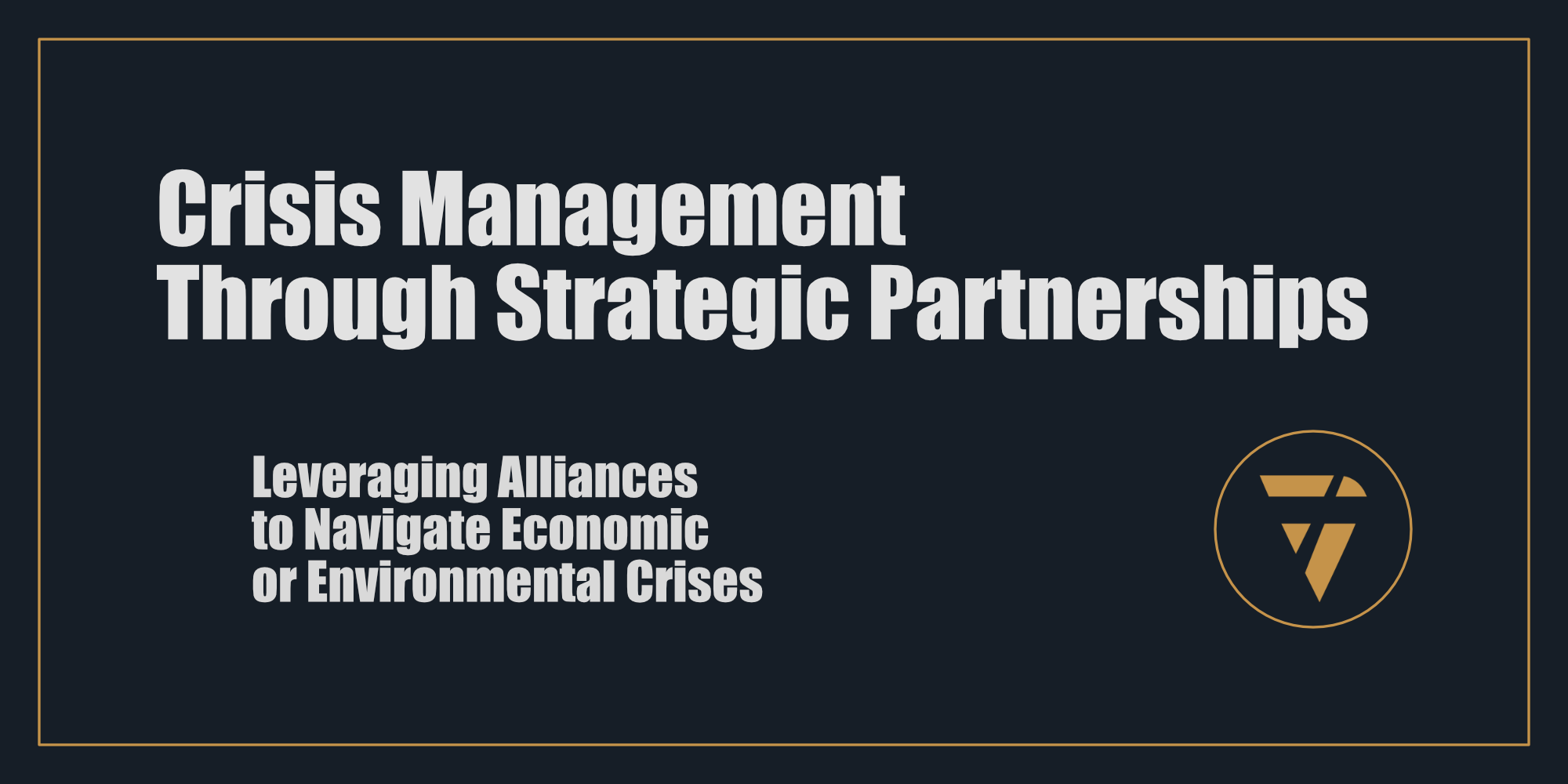Crisis Management Through Strategic Partnerships
Leveraging Alliances to Navigate Economic or Environmental Crises

What if the key to weathering today’s toughest challenges isn’t found in isolation, but in collaboration? In a world of increasing volatility, strategic partnerships have emerged as the linchpin of resilience.
The Age of Crises
Economic uncertainty and environmental crises have become defining challenges of our era. From the lingering effects of the COVID-19 pandemic to supply chain disruptions and climate-induced disasters, businesses are increasingly navigating uncharted waters. For many, the instinctive response is to buckle down, cut costs, and focus inward. But what if the solution lies in looking outward instead?
Strategic partnerships offer businesses a powerful way to pool resources, mitigate risks, and seize opportunities even in the face of adversity. This article explores how alliances can be the cornerstone of effective crisis management, offering both immediate relief and long-term growth potential.
The Role of Strategic Partnerships in Crisis Management
1. Amplifying Resources
When crises strike, businesses often face resource constraints—be it capital, labour, or technology. Partnerships allow organizations to tap into shared resources without bearing the full cost. For example:
- Economic Crises: Partnerships can ease liquidity challenges by enabling joint ventures or co-marketing initiatives.
- Environmental Crises: Collaborating with logistics partners during a natural disaster can ensure faster recovery and delivery of critical supplies.
2. Enhancing Flexibility
Alliances create a network of shared competencies. For instance:
- During supply chain disruptions, businesses that diversify their supplier networks through partnerships often fare better. A strategic partnership with a local supplier can mitigate risks posed by global disruptions.
3. Fostering Innovation
Crises demand rapid problem-solving. Partnerships bring together diverse expertise, fostering innovation. A great example is the healthcare industry during COVID-19, where pharmaceutical companies partnered to expedite vaccine development.
4. Building Public Trust
In times of crisis, demonstrating a commitment to the greater good can bolster brand reputation. Partnerships with NGOs or government agencies in relief efforts can strengthen public trust, while fulfilling corporate social responsibility objectives.
Proconsul’s Framework for Strategic Crisis Partnerships
Step 1: Identify Mutual Goals
The foundation of any successful partnership is alignment. Ask:
- What are the shared objectives during this crisis?
- How can both parties benefit from this collaboration?
Step 2: Select Complementary Strengths
Focus on partners whose strengths fill your gaps:
- A technology startup might collaborate with a logistics company to overcome delivery bottlenecks during a natural disaster.
- Manufacturers can align with energy companies to navigate power shortages caused by environmental crises.
Step 3: Establish Clear Roles
Crises amplify the need for clarity. Clearly define:
- Responsibilities
- Expected outcomes
- Communication protocols
Step 4: Plan for Scalability
A good partnership isn’t just about surviving the crisis—it’s about thriving afterward. Ensure the partnership can scale or evolve into a long-term relationship.
Challenges in Crisis Partnerships
- Misaligned Objectives: Partnerships can fail if goals are not mutually understood.
- Communication Breakdowns: In crises, communication must be rapid and clear to avoid missteps.
- Cultural Differences: Aligning company cultures is critical to avoid friction.
The Proconsul Perspective: A Strategic Approach
At Proconsul, we emphasize profitable partnerships as more than just temporary solutions—they are pathways to long-term strategic advantage. Using our proprietary frameworks, we help businesses:
- Identify high-value partners
- Develop agile partnership agreements
- Scale collaborations post-crisis for sustained growth
Actionable Takeaways
- Conduct a Partnership Audit: Review your existing network to identify potential allies with complementary strengths.
- Focus on Rapid Deployment: Build crisis-response mechanisms into your partnership agreements.
- Invest in Communication Tools: Shared platforms like Slack or Asana can streamline collaborative efforts during high-pressure situations.
- Embed Resilience in Contracts: Include clauses for flexibility, scalability, and shared risk mitigation.
What untapped partnerships could strengthen your crisis response? Are there synergies in your network that could transform challenges into opportunities?
Strategic partnerships are not just about survival—they are about redefining the way you navigate adversity. Subscribe to unlock more actionable insights on building resilient, profitable alliances. Let’s shape your strategy for today’s crises and tomorrow’s opportunities.
This Substack is reader-supported. To receive new posts and support my work, consider becoming a free or paid subscriber.
This is what I’m working on. Tell me what you think, I enjoy the conversation! Subscribe and follow the work in real time.
Thanks!
B
Crises aren’t conquered in isolation. The strongest strategy? Partnering with those who complement your strengths. In every challenge, there’s a partnership waiting to turn it into an opportunity. Who’s in your corner?
PS -





